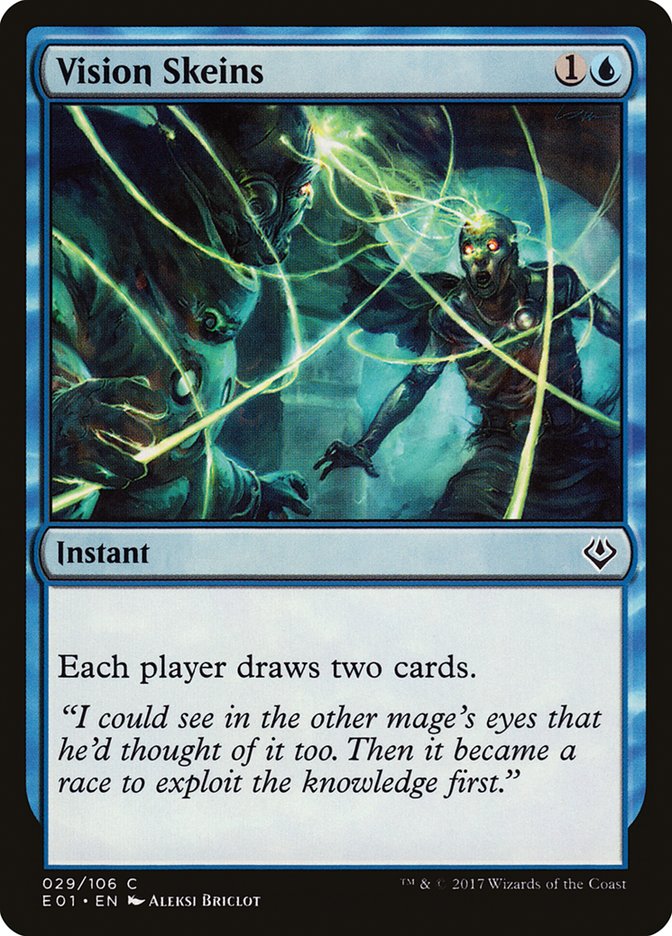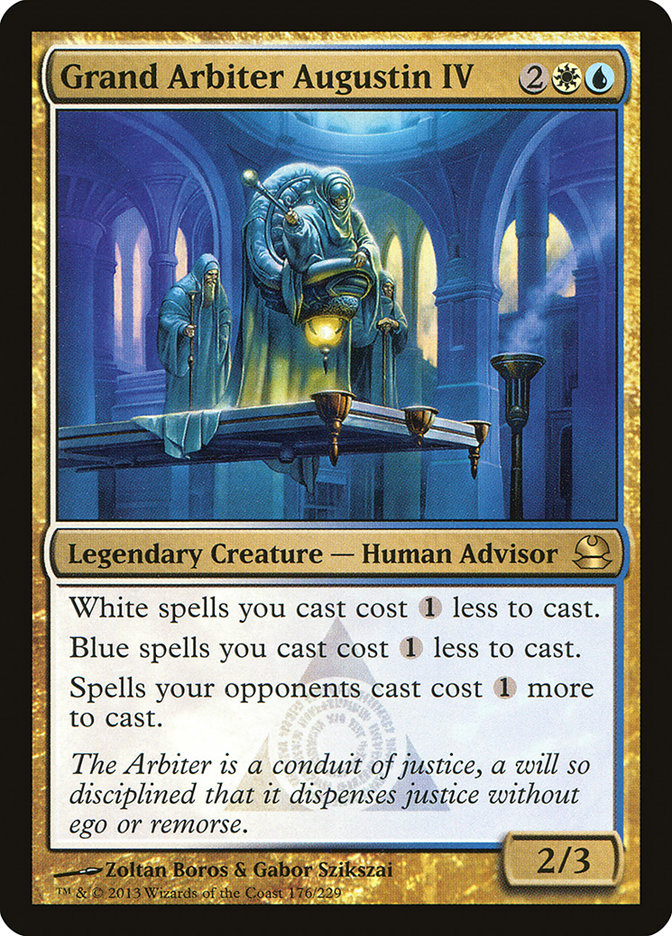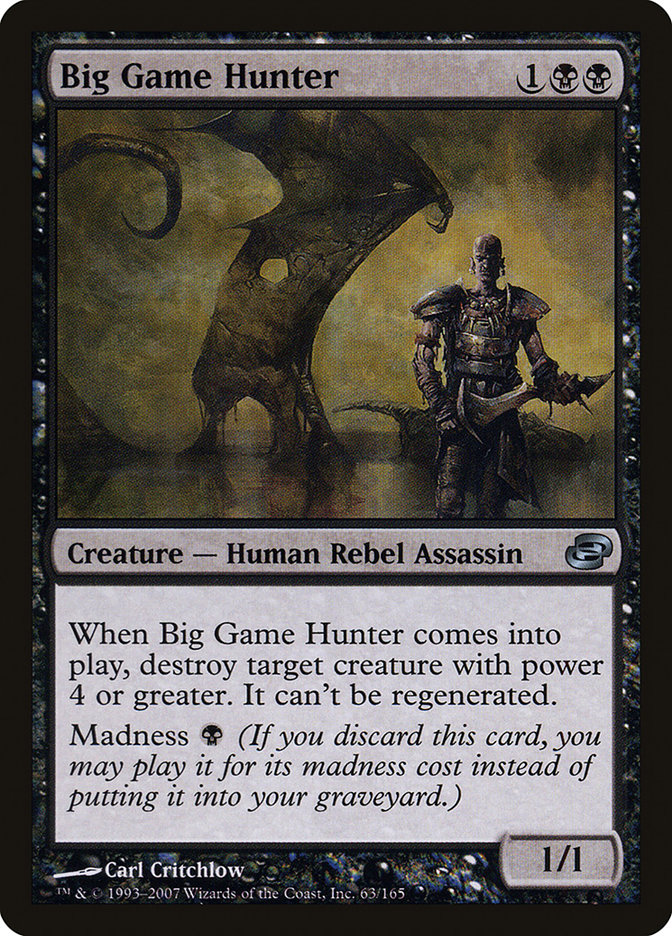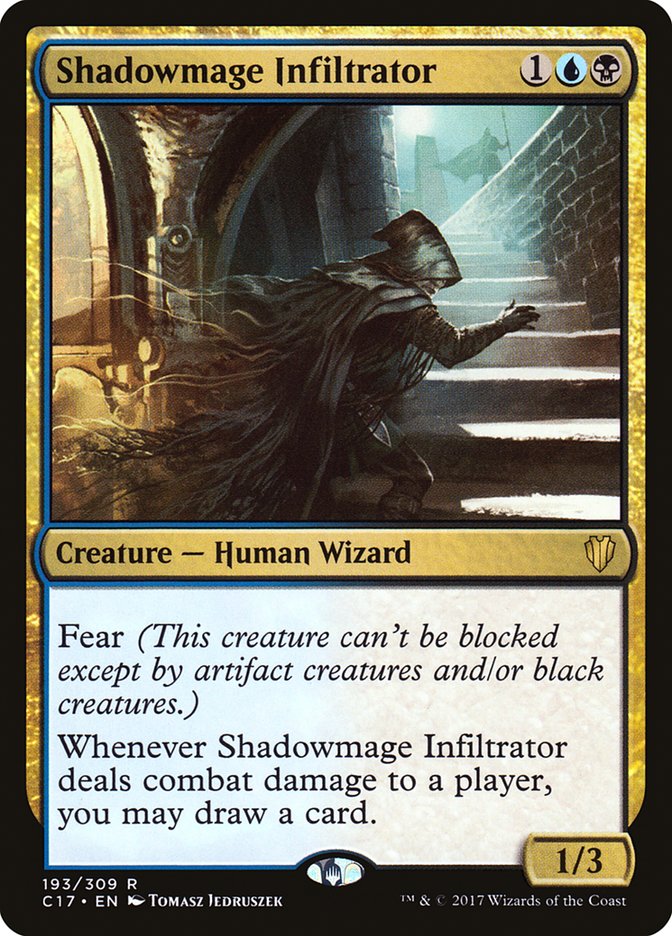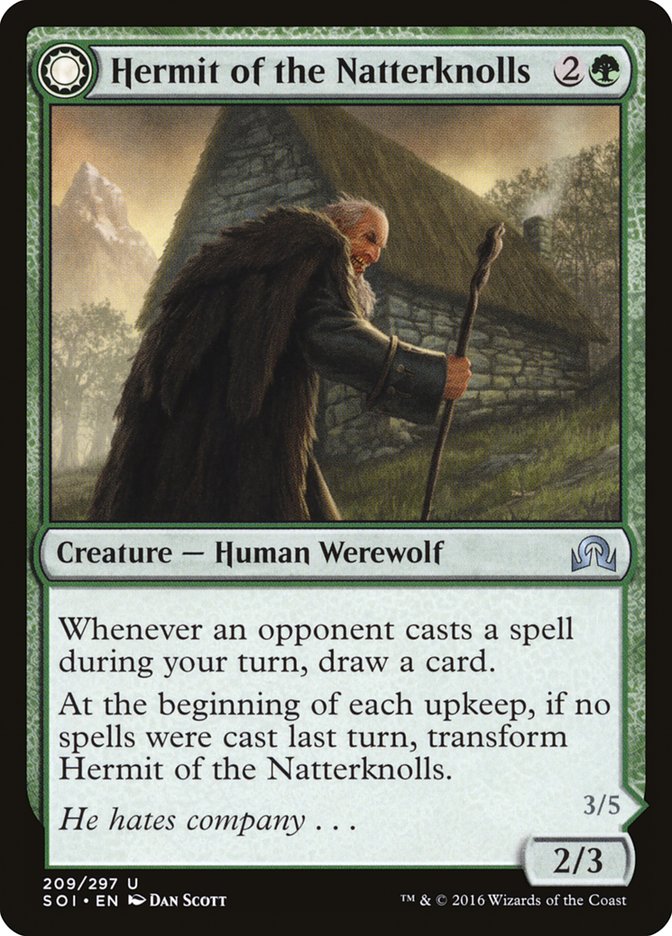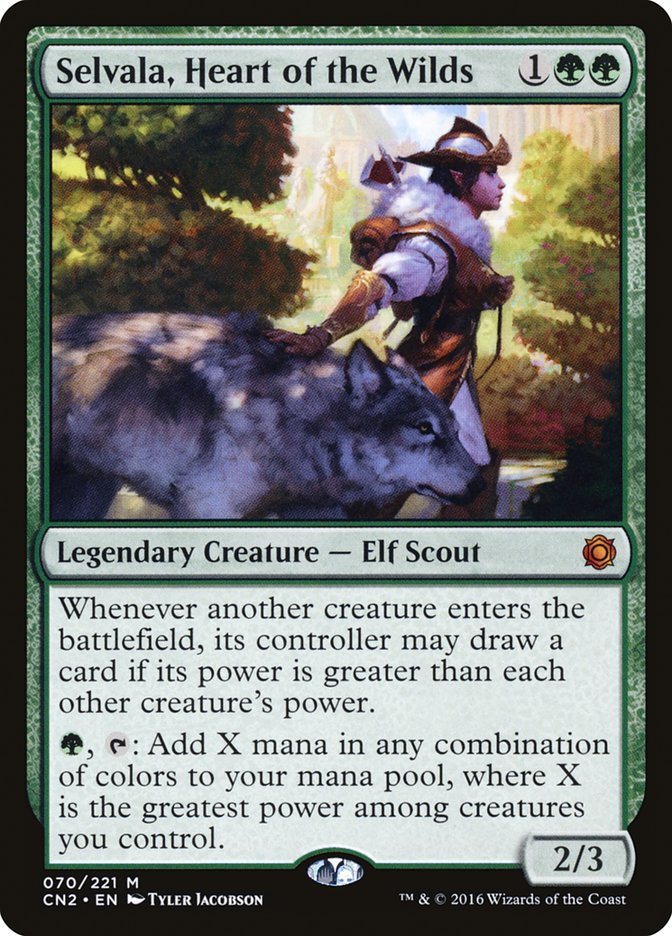Multiplayer Magic, and Commander in particular, is a beast unlike 1v1. There are far more considerations than just beating an opponent—since there is obviously more than one opponent to beat. Decision trees expand exponentially because of the involvement of other players. Resource management becomes different as resources themselves are compared to a greater whole. Whether or not you like politics, they’re part of a Commander game. In short, you just have to think differently when you’re approaching a multiplayer game.
I’m here to evangelize the Philosophy of Second Best. Philosophy of Second Best means flying under the radar just enough to not be the obvious threat in the game. Through various actions in the early and mid-game, you allow another player, or perhaps even more than one, to jump out into the lead. The rest of the players, seeing the obvious threats, will expend their resources in order to not get hurt (or maybe even killed) by the early threat player, leaving your stuff alone. Eventually, you’ll have built up enough resources, the dust will have settled, and you’ll be in the position to move from second best to first. Of course, this is all easier said than done.
The first thing to do when considering the Philosophy of Second Best is the style of game you’ll be playing in. If you’re in a local group and you know the character of the folks you game with, then you’ll be better prepared to know how to get moving. Philosophy of Second Best only applies to certain style of games—let’s call them “normal” games of Commander. These are the kinds of games you’re most likely to run into in non-competitive spaces, whether that’s at your local shop, your game room table, or the Command Zone at SCG Con (see you there 8-10 June, where I’ll be Bringing the Law along with Bennie Smith). Philosophy of Second Best is highly unlikely to apply to competitive games, since they’re about comboing out as quickly as possible. The only piece of the puzzle you might take away is waiting for the first person to try to combo out, let everyone else gang up and stop them if possible, and then swoop in when they’ve exhausted their counterspells and whatnot—but those games are played in such a narrow window that you might not even have time.
Getting started with the Philosophy of Second best happens before you ever sit down to a game. It happens when you build your deck. Jason Alt has written previously about the 75% solution to building a deck; it’s a series you need to read. The basic idea is that in order to maximize good times in your group, avoid building the absolute strongest deck you can, since the top dog deck is probably the competitive one.
I’ve often repeated the mantra “build casually, play competitively.” The idea is building decks that will be interesting not just to pilot, but to watch, both from in game and outside the game positions. Build casually will get you into the Second Best mindset. Now, I’m not advocating playing bad cards just to tone down your deck; I’m suggesting that taking directions other than the kind of strict optimization we see some folks advocate in deck building. Building a finely-tuned, tightly operating machine is a kind of fun on its own, and if that’s your play style, go for it. It’s far more difficult for you then to adopt Philosophy of Second Best, because it’s going to be obvious from the get-go that you’re the threat. Think of it this way when you’re making choices during deck construction: the objectively best card (which there sometimes isn’t) to go into a slot and the most interesting card are likely two different things. You don’t have to go full bore like I have with the Do Over Project, in which arguably all the cards are second best. I’m suggesting putting some thought into what battlefield states are going to look like when you play your 100.
The Philosophy of Second Best also precludes you from building certain deck styles, because even if they’re not the immediate threat, they’re annoying enough that people will target you anyway. Stax and other resource denial decks fit into this category. Second Best is about avoiding the hairy eye, and nothing gets you stared at so much as lock downs. Even if you’re just playing that Grand Arbiter Augustin IV to make your stuff cheaper, it’s still slowing down everyone else. They’re going to notice.
You might think that “play competitively” violates our philosophy, but it doesn’t. In a 1v1 match, there are times when you just dagger the other player. If they miss a land drop or two, you might consider using your Strip Mine early instead of late in order to prevent them from doing anything. In a multiplayer match, that one-for-one resource exchange isn’t likely worth it. “Play competitively” means setting yourself up for the eventual win. Since you’ve already “built casually,” you aren’t too likely to just go off (although it might happen when a battlefield situation develops and you can use other players’ cards to do insane stuff). “Play competitively” means being aware that you have three or four opponents, and you have to be aware of relative threat levels of both the player and their deck before you make choices. In 1v1, you kick someone when they’re down; in multiplayer, there’s value to picking them up and dusting them off. Being nice, which is anathema in regular Magic, is of strategic advantage in Commander. There are certainly situations in which you’ll want to finish off someone who is weak because you’re aware of their comeback potential—but in the Philosophy of Second Best, you’re better of letting (or forcing) another player (to) do the dirty work.
For example, Weakened Player 3, who you know has Sanguine Bond / Exquisite Blood combo in their deck (and maybe even one piece on the battlefield), is at five with one big blocker. You have a 5/5 and Big Game Hunter in hand. Normal Battlefield State Player 2 to your left also has a 5/5 and Visara the Dreadful, which will be active when she untaps. Second best tells us to wait and let Player 2 kill Player 3; we can then come back over the top next time to use our Big Game Hunter on Visara, getting an annoying piece out of the way.
My point here is that flying under the radar is the same as playing competitively. You’re simply playing a longer game. But back to deckbuilding for a moment.
The Philosophy of Second best will lead you to some deckbuilding choices that are big splashes seemingly out of nowhere. They give you the opportunity to win games that it didn’t seem like you were about to win. I’m talking more about single card strategies here than assembling an engine. The best example are the Overrun effects. The original Overrun is an obvious one; Garruk Wildspeaker is obviously obvious, since it’s there on the battlefield (so it doesn’t really apply here). Overwhelming Stampede is one that’s likely to be even more deadly than Overrun; so is Triumph of the Horde, but that one’s likely to earn you some bad blood. I’m always curious to watch how people act regarding poison. There are many situations in with Triumph of the Horde and Overwhelming Stampede are equally deadly—but people would rather lose to the latter than the former (so keeping in mind how other players see things is important to our philosophy). I suppose Tooth and Nail for Craterhoof Behemoth and Avenger of Zendikar counts, but you want to build in something a little more creative since that one and its variants have been around the block more than a few times. One of my favorite cards to unlock a clogged battlefield state is Sun Quan, Lord of Wu. Suddenly, none of your creatures can be blocked (because who plays horsemanship?). The other one of my favorite “what the hell just happened?” cards is Batwing Brume. It can take a situation in which a swarm of creatures would kill you and turn it back on the attacker.
You’ve built a 75% solution deck (please don’t confuse that with Sir Arthur Conan Doyle’s 7% solution), and now you need to explore the Philosophy of Second Best as it applies to playing it. The deck you’ve built will help you a great deal, since you’ve cut back on the obvious threat stuff. Still, you’ll want to be active and participating in the game. Build your resources—play your ramp spells and your mana rocks. In those early turns, I actually like to make a few insignificant attacks. Hit people for two here or three there just to let them know you’re in the game, but pull back once things get more developed. Obviously you keep attacking with Shadowmage Infiltrator, because it draws cards.
One of the major parts of the Philosophy of Second Best is the counterintelligence campaign. When things are at equilibrium, it’s about making the stuff that other people have seem more worse than what you have. This must be handled very subtly and quite deftly. Obviously, if there’s a giant threat on the battlefield, don’t try to be coy and ignore it. Suggest that everyone do something about that Lurking Predators right away (and give them a turn or two to do it, even if you have the answer—unless, of course, you want to cast lots of spells; then murder that thing). I’m talking about things which aren’t so obvious, like creatures with variable power and toughness, like Overbeing of Myth. The thing you really have to encourage people to do something about is a card they’re frightened to get rid of because it will hurt them back, like Martyr’s Bond or Karmic Justice. Calmly explain how a little bit of pain now will save them lots of pain later. Like in the Lurking Predators example, if whatever the card is will ruin your day and you can do something about it, don’t hesitate (pro tip: if you exile Martyr’s Bond, there’s no retribution, at least from the card).
One of my favorite tactics to get other people to notice a card is to ask innocuous questions about it. Again, this has to be handled with a degree of discretion and not be an obvious technique. One choice is to ask about the card in question as it relates to something of yours. “Did I play this Hermit of the Natterknolls before or after you played [your kind of cool card]? You must have cast yours after, since my Hermit didn’t transform.” I also find that with older cards you want to call attention to, simply ask what set they’re from. If they’re really old, get the set wrong. “Barrin, Master Wizard is from Tempest block, right?” The more the person talks about the card, the more other people might wonder what’s up.
You’ve probably heard about rattlesnake-ing and turtling. Being second best isn’t about either of those (which are fine techniques). For those who haven’t heard the term, to rattlesnake is to put out a card that’s not going to do anything to anyone unless they do it first. You won’t get bitten if you don’t stick your hand in the grass. Karmic Justice is a pretty good rattlesnake card, as is the aforementioned Visara). Turtling is obviously just building a nearly impenetrable fortress around yourself. Contrarily, the Philosophy of Second best is about doing things but not encouraging too much retribution for having done them.
I’ll often misdirect why I’m attacking someone, using humor or references outside the game. Additionally, I believe that “battle” is always a better word to use than “attack.” People sense what an attack is and are likely to take it more personally. “Battle you for eating a Klondike Bar while we’re playing” or even better psychologically, be indirect. Instead of saying you, which turns the focus to you and them, use their name, which brings every other player into the conversation as well. “Battle Chris for not liking Bruno Mars.”
Getting buy-in from other players is also part of Second Best. When you have a choice to make—like you’ve cast a creature and you have Aura Shards on the battlefield and lots of potential targets, simply ask opinions. “What’s the scariest thing out there?” When someone chooses what you were going to choose anyway, make an argument for a different card, accomplishing two things. It deflects responsibility for blowing up the thing you want to get rid of, and it calls attention to the next thing down the line that you want someone else to deal with.
The Philosophy of Second Best is all about patience. It’s about avoiding being the obvious threat (for a time, at least; it’s pretty hard to be seen as not the threat when you drop Selvala, Heart of the Wilds down Turn 2 or 3). It’s about waiting to not show your hand until other players have spent some of their resources dealing with larger concerns so that they don’t have the resources to stop you. Put it into practice and people will be wondering why you never seem like the threat but you end up winning more than your share of games.
This week’s Deck Without Comment, the Karador Do-Over, embraces the Philosophy of Second Best.
Creatures (33)
- 1 Sakura-Tribe Elder
- 1 Spike Weaver
- 1 Phantom Nishoba
- 1 Mindless Automaton
- 1 Loxodon Hierarch
- 1 Juniper Order Ranger
- 1 Masked Admirers
- 1 Vigor
- 1 Fertilid
- 1 Reveillark
- 1 Skullmulcher
- 1 Qasali Pridemage
- 1 Ghave, Guru of Spores
- 1 Scavenging Ooze
- 1 Mikaeus, the Lunarch
- 1 Disciple of Griselbrand
- 1 Corpsejack Menace
- 1 Treasury Thrull
- 1 Realm Seekers
- 1 Ivorytusk Fortress
- 1 Anafenza, the Foremost
- 1 Lifeblood Hydra
- 1 Daghatar the Adamant
- 1 Warden of the First Tree
- 1 Enduring Scalelord
- 1 Anafenza, Kin-Tree Spirit
- 1 Patron of the Valiant
- 1 Drana, Liberator of Malakir
- 1 Mazirek, Kraul Death Priest
- 1 Bloodspore Thrinax
- 1 Selfless Spirit
- 1 Winding Constrictor
- 1 Ridgescale Tusker
Planeswalkers (3)
Lands (37)
Spells (26)
- 1 Tangle
- 1 Kirtar's Wrath
- 1 Akroma's Vengeance
- 1 Explosive Vegetation
- 1 Attrition
- 1 Pernicious Deed
- 1 Return to Dust
- 1 Cauldron of Souls
- 1 Fracturing Gust
- 1 Batwing Brume
- 1 Cauldron Haze
- 1 Day of Judgment
- 1 Eldrazi Monument
- 1 Momentous Fall
- 1 Contagion Engine
- 1 Ready
- 1 Primeval Bounty
- 1 Primal Vigor
- 1 Dictate of Erebos
- 1 End Hostilities
- 1 Hardened Scales
- 1 Abzan Charm
- 1 Map the Wastes
- 1 Oath of Ajani
- 1 Lifecrafter's Gift
- 1 Axis of Mortality

Check out our comprehensive Deck List Database for lists of all my decks:
SIGNATURE DECKS
Purple Hippos and Maro Sorcerers; Kresh Into the Red Zone; Halloween with Karador; Dreaming of Intet; You Did This to Yourself.
THE CHROMATIC PROJECT
Mono-Color
Heliod, God of Enchantments; Thassa, God of Merfolk; Erebos and the Halls Of The Dead; Forge of Purphoros; Nylea of the Woodland Realm; Karn Evil No. 9.
Guilds
Lavinia Blinks; Obzedat, Ghost Killer; Aurelia Goes to War; Trostani and Her Angels; Lazav, Shapeshifting Mastermind; Zegana and a Dice Bag; Rakdos Reimagined; Glissa, Glissa; Ruric Thar and His Beastly Fight Club; Gisa and Geralf Together Forever.
Shards and Wedges
Adun’s Toolbox; Angry, Angry Dinos; Animar’s Swarm; Borrowing Stuff at Cutlass Point; Ikra and Kydele; Karrthus, Who Rains Fire From The Sky; Demons of Kaalia; Merieke’s Esper Dragons; Nath of the Value Leaf; Rith’s Tokens; The Mill-Meoplasm; The Altar of Thraximundar; The Threat of Yasova; Zombies of Tresserhorn.
Four-Color
Yidris: Money for Nothing, Cards for Free; Saskia Unyielding; Breya Reshaped.
Five-Color
Partners
Tana and Kydele; Kynaios and Tiro; Ikra and Kydele.
THE DO-OVER PROJECT
Animar Do-Over; Glissa Do-Over; Karador Do-Over; Karador Version 3; Karrthus Do-Over; Kresh Do-Over; Steam-Powered Merieke Do-Over; Lord of Tresserhorn Do-Over; Mimeoplasm Do-Over; Phelddagrif Do-Over; Rith Do-Over; Ruhan Do-Over.
If you’d like to follow the adventures of my Monday Night RPG group (in a campaign that’s been alive since 1987) which is just beginning the saga The Lost Cities of Nevinor, ask for an invitation to the Facebook group “Sheldon Menery’s Monday Night Gamers.”


